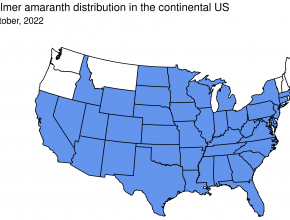
Updated Palmer amaranth distribution
State-level distribution of Palmer amaranth (Amaranthus palmeri) as of October 12, 2022. Data assembled by Andrew Kniss.
Updated Palmer amaranth distribution Read MoreThoughts from someone who spends life amongst the weeds

State-level distribution of Palmer amaranth (Amaranthus palmeri) as of October 12, 2022. Data assembled by Andrew Kniss.
Updated Palmer amaranth distribution Read More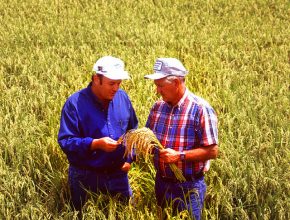
I love agriculture. I grew up on an irrigated farm in the panhandle of Nebraska. My grandma & grandpa, my aunts & uncles, and my mom & dad all farmed together, and three of our families lived within 1 mile of each other. I grew up farming the same land that my grandparents farmed while raising my dad & his siblings. Most of my cousins and most of the friends I grew up with also grew up on farms. It …
Welcoming to who? Read More
A study published in the Proceedings of the National Academy of Sciences (PNAS) has both glyphosate and autism in the title, and so it is sure to re-ignite a firestorm around the world’s most widely used herbicide. The abstract of the article states that the authors “found ASD-like behavioral abnormalities in juvenile offspring after maternal exposure to high levels of formulated glyphosate.” [emphasis mine] One notable bit of information that is not in the title or the abstract is the …
Study linking glyphosate to autism (in mice) actually supports the safety of glyphosate Read More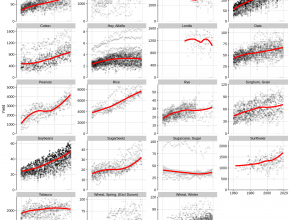
Each point represents crop yield from one state in one year. The transparency level indicates the number of acres produced; darker points mean more acres, and lighter points mean fewer acres. All data from USDA-NASS.
Long-term Crop Yield Trends in the United States Read More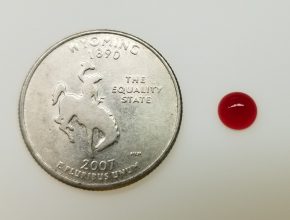
Yesterday, I posted some photos to twitter, and have been asked to provide a little bit of context. My goal with these photos was not to “raise an alarm” – I was simply trying to provide a visual illustration of how susceptible soybean plants are to the herbicide dicamba. Recently, I published a meta-analysis of published literature on this topic. In that paper, I estimated the amount of dicamba required to cause both yield loss and visible injury symptoms. The …
How much dicamba is required to injure soybeans? Read More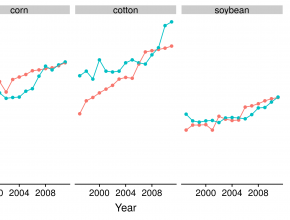
It’s a simple question. And at first glance it seems like there should be a simple answer to this simple question. We have planted millions of acres of genetically-engineered (GE) crops, a vast majority of which are resistant to herbicides. In the U.S., we’ve collected lots of herbicide sales and usage data, spanning the entire time period when GE herbicide-resistant crops went from non-existent to dominating the landscape. So we should be able to simply look at the herbicide data before …
Have genetically engineered herbicide-resistant crops increased or decreased herbicide use? Read More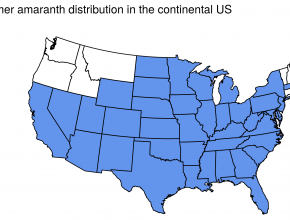
Palmer amaranth is native to the southwestern United States, and has been recognized as a problematic weed in the southwest and southeastern US for many years. Each year, this species seems to move further north. I’ve been trying to keep an accurate state-level distribution map for this weed, and thought I’d post it here for anyone else who might be interested. Data sources: PLANTS database (https://plants.usda.gov) California, Nevada, Utah, Arizona , Colorado, New Mexico, Nebraska, Kansas, Oklahoma, Texas, Wisconsin, …
Palmer amaranth – current state-level distribution in the US Read More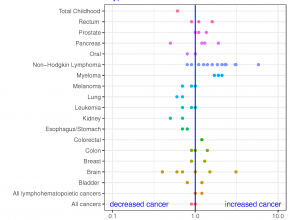
Recently, a jury in San Francisco, California recommended that Monsanto be forced to pay $289 million to a man who has been diagnosed with non-Hodgkin lymphoma. It was a pretty stunning result from a court case that has been watched very closely. I haven’t read the court transcripts, and I don’t know what the jury was told or what was withheld from them. And I have no desire to make accusations that either side was acting in bad faith. So …
Glyphosate and cancer – revisited Read More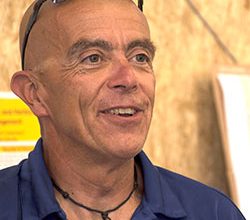
This has been a difficult year. One year ago, I learned that my best friend had died in a motorcycle accident. He was traveling to a meeting in California – a meeting that I was also attending. I found out about Gustavo’s passing just a few seconds before the flight attendant made me put my phone into airplane mode. I was alone, without the ability to communicate, and I’d just been told I would never again get to see the …
Remembering Gustavo Read More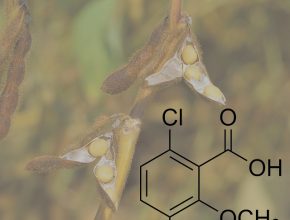
Below is a non-exhaustive timeline of dicamba and dicamba-resistant soybean. I’ll add to it and update it as needed, perhaps with interesting information or current status updates. I’ve mostly put it together for my use in teaching/extension, but thought I’d post it here in case it is useful to others. 1958 Dicamba was discovered and first described. 1967 Dicamba was first registered for use under the trade name ‘Banvel’. It was widely used over the next 30 years to control …
Dicamba-Resistant Crop Timeline Read More